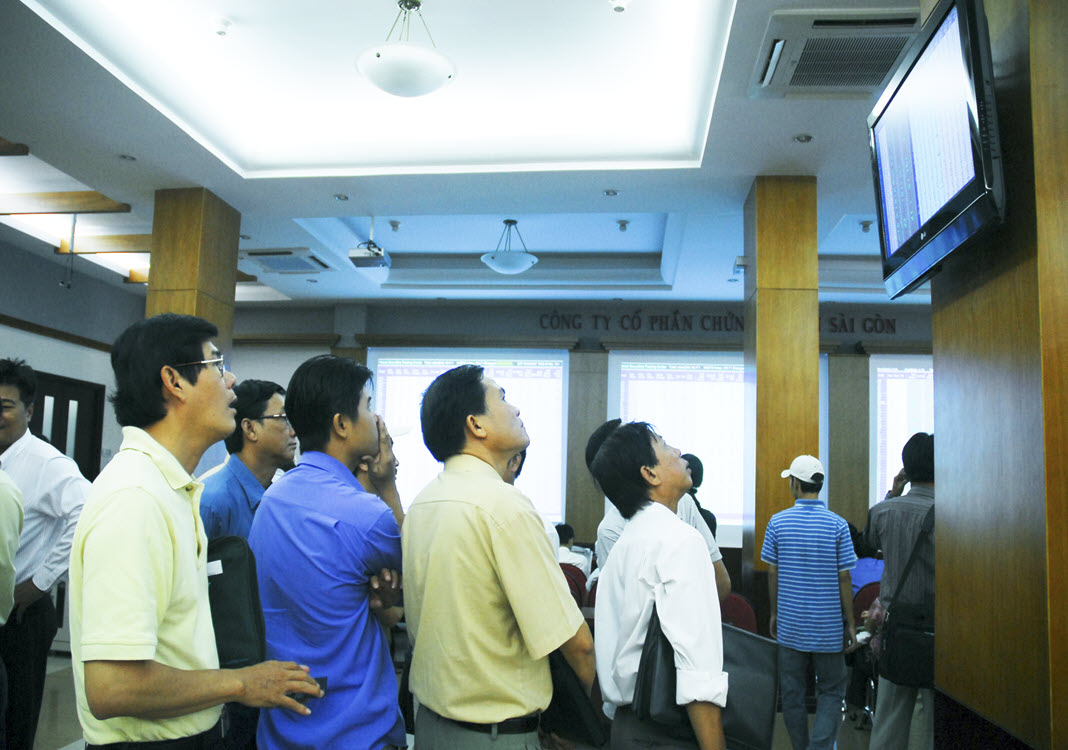The VN-Index once again overcame the super-psychological resistance level of 1,200 points in the middle of this month, before closing the last session of the week on January 15 at 1,194 points. This is a very important milestone, after which the market took a nosedive twice in the past in 2007 and 2018.
Perhaps, never before has the stock market of Vietnam been as confident as it is now. There were rapid and sharp price increases before, but there have never been such high transaction values. The problem quite a few investors are probably concerned about is whether the market has formed a bubble or not. If not, investors are willing to pour more money into the market in the near future.
It is really difficult to answer this question because a standard concept or a specific index to be used to confirm the bubble of stock prices is now not available in the stock market. Therefore, perhaps a fair way now is to compare Vietnam’s current indicators with those of other countries in the region and the world.
One of the indicators used by many analysts to value stocks is the P/E ratio (the ratio of a company’s stock price to their earnings per share). As per the data released by Bloomberg, Vietnam’s current P/E ratio is still fairly lower than those of other regional countries, such as Thailand, Indonesia or the Philippines, and much lower than that of the U.S. stock market. The P/E ratio of just nearly 20 at present is still way below the 41-mark in 2007, when Vietnam’s stock market was considered a “bubble.”
Signs of hot growth become visible
A correlative comparison between the current P/E ratio and the one in 2007 shows that the stock market at home has not displayed any obvious signs of a bubble. However, from the author’s point of view, signs of hot growth have appeared in the market. That means the market may go up quickly and may also sharply drop back to equilibrium.
The hot growth is reflected in both the transaction value and the number of individual investors in the market. It would be good news if the cash flow is sustainably diverted from other investment channels to the stock market, as it will render businesses less dependent on finance from the banking system.
In the current context of low interest rates, quite a few people have turned their savings into stock investments. The market will therefore grow more sustainably if such cash flow is transferred via professional investors, i.e. investment or fund management companies, etc.
However, that is not the case at present when the number of securities accounts newly opened by individuals has recently grow exponentially. That suggests people are investing in stocks on their own now. Among them, the role of F0 investors, those individuals who have had zero experience with the stock market, is too big to be ignored.

The credit growth rate in December should be a source of worries, too. On the final 10 days of 2020, credit rose by two percentage points to wrap up the year at 12.13%, a rate slightly lower than in 2019 (around 13.5%). It is believed that a part of the additional credit capital has been poured into the stock market. There are multiple products for both individual and corporate clients to take out loans from banks and then switch to stock investment. Some of them are cash overdraft or working capital lending to serve production and business activities. Along with that is the extremely high leverage ratio of investors at securities firms. Low interest rates have made it easier for securities companies to gather more capital to lend to investors, an operation known as margin lending. Although the State Securities Commission of Vietnam (SSC) manages the margin rate for each stock, in reality there are many groups of individuals acting as intermediaries for lending (commonly known as treasuries or funds). This situation has put the actual margin ratio of investors at only about 10% of the transaction value.
The 2008 lesson for F0 investors
Perhaps, many investors, even those who are not F0 investors, have not been caught in a situation in the past when the market lost its liquidity. Sell orders were then massively placed into the system as soon as the market opened (the ATO session), while buyers almost had no reciprocal orders. A long series of such sessions was recorded in 2008.
To prevent a catastrophic fall in stock prices in the short run, the SSC revised down the trading band several times, from 7% to 5%, then to only 3%. In fact, only those who found themselves in such situation feel uneasy with the current movements of the market. There are a couple of stocks that have swiftly multiplied, whereas the business results of the companies they represent are almost unchanged.
The market will only develop sustainably when the cash flow and the quality of investors improve. To be specific, professional investors must make up the majority as it is the case in developed countries instead of minority. Therefore, if the stock market becomes bearish suddenly, the consequences will be fatal, with an immediate and direct blow to F0 investors, those who have spent years building up their savings and are now facing the risk of being swept away any time.
By Dong Ha











